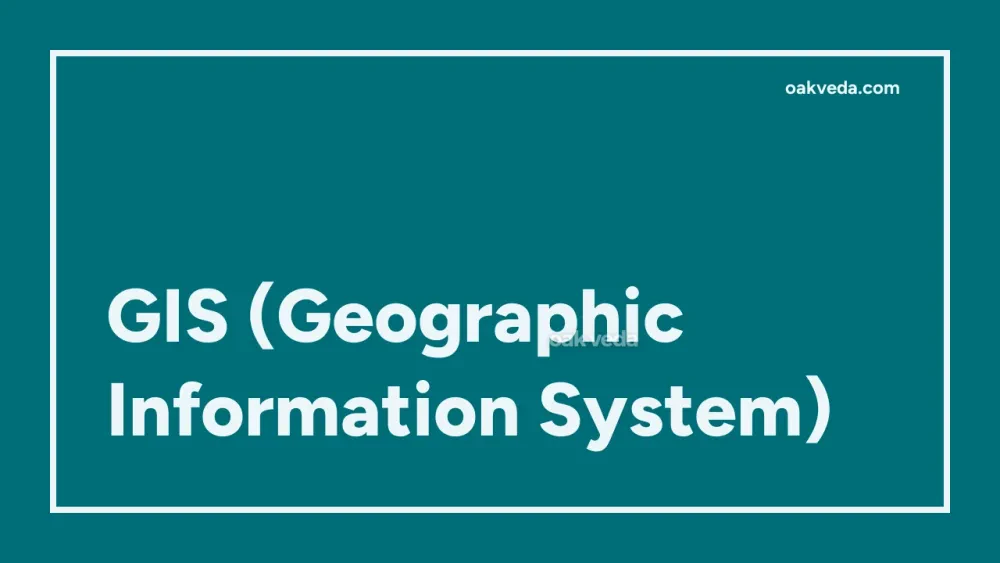
What is the Full Form of GIS?
The full form of GIS is Geographic Information System. This powerful technology has revolutionized the way we capture, analyze, and visualize spatial data, making it an indispensable tool in various fields.
What is Geographic Information System?
A Geographic Information System is a sophisticated computer-based framework designed to capture, store, manipulate, analyze, manage, and present all types of geographical and spatial data. It integrates hardware, software, and data to transform complex spatial information into easily understandable visual representations.
Origin and Development of Geographic Information System
The concept of GIS emerged in the 1960s, with the Canadian government pioneering its development for land inventory purposes. Dr. Roger Tomlinson, often referred to as the "father of GIS," played a crucial role in creating the first computerized GIS called the Canada Geographic Information System.
Since then, GIS has evolved dramatically, benefiting from advancements in computer technology, remote sensing, and data collection methods. Today, it has become an integral part of decision-making processes in various sectors.
How does Geographic Information System work?
GIS operates by layering different types of data on top of each other to create a comprehensive view of a geographical area. The system works with two main types of data:
- Spatial data: Represents the location and shape of geographic features
- Attribute data: Provides additional information about these features
GIS uses various data models to represent spatial information:
- Vector data: Represents features as points, lines, or polygons
- Raster data: Uses a grid of cells to represent continuous data like elevation or temperature
The system then processes this data using spatial analysis techniques, allowing users to identify patterns, relationships, and trends within the geographical context.
Functions of Geographic Information System
GIS offers a wide range of functions that make it a versatile tool for spatial analysis:
- Data capture and input: Collects data from various sources like satellite imagery, GPS, and surveys
- Data storage and management: Organizes and maintains large volumes of spatial and attribute data
- Data manipulation and analysis: Performs complex spatial operations and statistical analyses
- Data visualization: Creates maps, charts, and 3D models to represent data visually
- Data output and reporting: Generates reports, maps, and other visual outputs for decision-making
Applications of Geographic Information System
The versatility of GIS has led to its adoption across numerous fields:
- Urban planning: Assists in land use planning, zoning, and infrastructure development
- Environmental management: Monitors ecosystems, tracks climate change, and manages natural resources
- Transportation: Optimizes route planning, traffic management, and logistics
- Public health: Maps disease outbreaks, analyzes health trends, and plans healthcare facilities
- Agriculture: Supports precision farming, crop monitoring, and yield prediction
- Disaster management: Aids in risk assessment, emergency response planning, and damage assessment
- Business: Helps in site selection, market analysis, and customer targeting
Features of Geographic Information System
Key features that make GIS a powerful tool include:
- Spatial analysis: Performs complex calculations based on geometric properties
- Network analysis: Analyzes interconnected features like roads or utility networks
- Terrain analysis: Studies elevation, slope, and other topographic characteristics
- Geostatistical analysis: Applies statistical methods to geospatial data
- 3D modeling: Creates three-dimensional representations of landscapes and structures
- Time series analysis: Tracks changes in spatial patterns over time
Benefits of Geographic Information System
GIS offers numerous advantages across various sectors:
- Improved decision-making: Provides comprehensive spatial insights for informed choices
- Cost savings: Optimizes resource allocation and reduces operational expenses
- Better communication: Enhances understanding through visual representation of complex data
- Improved geographic information record keeping: Maintains accurate and up-to-date spatial databases
- Efficient data management: Streamlines the handling of large volumes of geospatial data
- Enhanced productivity: Automates many time-consuming tasks in spatial analysis
Limitations or Challenges of Geographic Information System
Despite its many benefits, GIS faces some challenges:
- Data quality and accuracy: Relies heavily on the quality of input data
- Cost: Initial setup and maintenance can be expensive for some organizations
- Complexity: Requires specialized skills and training to operate effectively
- Data integration: Combining data from different sources can be challenging
- Privacy concerns: Handling sensitive location data raises privacy issues
Future Developments in Geographic Information System Technology
The future of GIS looks promising with several emerging trends:
- Integration with AI and machine learning: Enhancing predictive capabilities and automation
- Real-time GIS: Incorporating live data streams for up-to-the-minute analysis
- Cloud-based GIS: Improving accessibility and collaboration
- Augmented and virtual reality integration: Creating immersive spatial experiences
- Internet of Things (IoT) integration: Incorporating data from connected devices for richer spatial insights
FAQs on GIS Full Form
-
What does GIS mean in full form? GIS stands for Geographic Information System.
-
Is GIS the same as GPS? No, GIS (Geographic Information System) is different from GPS (Global Positioning System). GPS is a satellite-based navigation system, while GIS is a system for analyzing and visualizing spatial data.
-
What are the main components of a GIS? The main components of a GIS are hardware, software, data, people, and processes.
-
Can GIS be used on mobile devices? Yes, many GIS applications are now available for mobile devices, allowing for data collection and analysis in the field.
-
What skills are needed to work with GIS? Skills needed for GIS include spatial thinking, cartography, database management, programming, and knowledge of specific GIS software.
You may be interested in:

